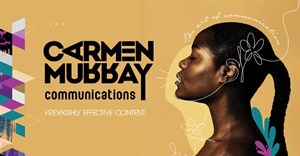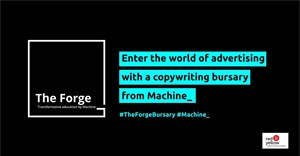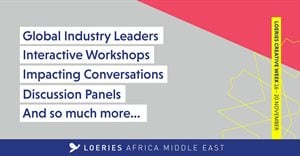
Subscribe & Follow
Jobs
- Marketing Assistant Johannesburg
- Advertising Sales Executive Sandton
- Influencer Campaign Manager Cape Town
- Digital Marketing Internship - Paid Position Centurion
- Chief Marketing Officer Cape Town
- Sales, Marketing and Financial Advisory Durban
- Paid Media Specialist Cape Town
- Marketing Coordinator Cape Town
- Senior Marketing Account Manager Cape Town
- Digital Marketing Manager Cape Town
#FutureFitYourself: Is diversity applied responsibly?

Many use diversity inclusion as a form of “cliché flexing” and really don’t understand how deeply rooted this issue is and due to a lack of understanding, this is not treated with the respect it deserves.
The question I always have, is how can marketers enforce diversity inclusion? Think about it, if you don’t live and breath the principles and ideas of diversity inclusion, how can you try and sell your brand to a diverse consumer market?
It just doesn’t make sense to me? It’s that “Cremora” effect: It’s not inside, it’s on top!
I booked some time with Dr Marius Wait, HOD: UJ Department of Marketing Management and the custodian of the #UJMarketingFit Experiences. He is a force to be reckoned with when it comes to marketing and research and I wanted to hear his views on how we can apply diversity responsibly.
His views blew me away and I hope this inspires you as much as it inspired me.
Is diversity marketing applied responsibly?
Before we tackle the topic of diversity marketing, let’s explore what this concept means.
Diversity marketing in its purest form simply means that we have to acknowledge that different customers have different values, experience and expectations. These topics can further be differentiated by addressing groups such as ethnicity, age, gender, profession, religion, family size, physical environment, etc. Diversity marketing is all about finding diverse ways of presenting a bespoke 4P to these groups.
This in itself is quite a task and on top of this, recent research has shown that the original definitions of these diverse groups are outdated.
More than a woman
Let’s focus on gender diversity. Traditional and stereotypical gender roles in developed countries are outdated and marketers should use contemporary images in marketing media. More intertwined in this topic is the issue of gender equality. The billion-dollar question is “Are genders treated equally over marketing media?” The answer is an unequivocal no!
Women still have to fight for equal footing in the business world as well as in marketing media. As one academic stated, “How gender in society is portrayed can have profound and far-reaching effects on social perceptions”. Marketing media’s portrayals of women are continuously evolving but women’s roles are often narrowly defined.
Woman in marketing media less often appear in business settings than men and are more likely to be associated with domestic products, consequently not depicted as intelligent nor hard-working. Transformation in the marketing media of the evolved woman’s role has not been significant.
Gender representations in marketing media are important, even as these roles evolve in society.
The correct marketing messages are extremely important as marketing media is also seen as a means of social communication. Adding to the social communication aspect, marketing has a responsibility to portray changes in the gender roles by accurate representation and therefore adding to relatively new gender stereotypes.
In other words, marketing media can shape gender roles through gender role portrayals. Although the adoption of the “career-orientated independent woman” in marketing media is essential, in many countries woman are still portrayed negatively, for example in India and Pakistan. In these countries, marketing media still portrays women as subservient and dependent on men. One researcher states that these women are portrayed as a marketing product and not as a social entity. Overall, the role of the woman, in marketing media does not correlate to reality.
Marlboro man
On the other hand, the role of the man as represented in marketing media has needed very little tweaking over time. Men in marketing media are more probable to be presented as celebrities and professionals whilst women as demonstrators, parents, partners and models.
Think of the Marlboro man of old, the example is still fitting. Men are seen as a symbol of freedom, independence and adventure, representing the traditional masculine features, which include inter alia dominance, competitiveness, aggressiveness and self-confidence. Despite the dominance of men as strength bearers in marketing media, there are attempts to portray the modern-day man as part of a family.
However, men with children appear in marketing media targeting women and children more so than marketing media targeting men.
Also, consider that images of men with children but no spouse were used six times less than vice versa. Men are not presented in marketing media for household products. If men appeared in marketing media for child-related products, they would depict an expert for the presented product instead of the father figure.
A very interesting fact to consider here is that in recent research, 74% of men surveyed feel that their portrayal in marketing media is out of touch with reality.























